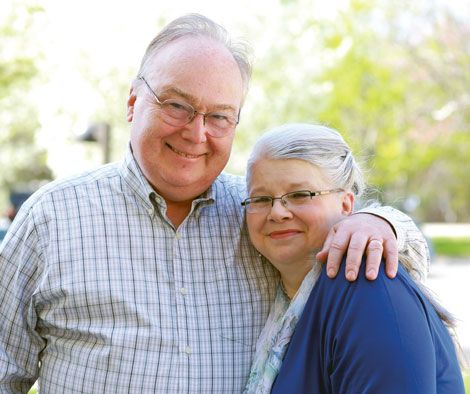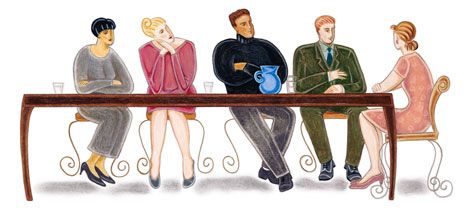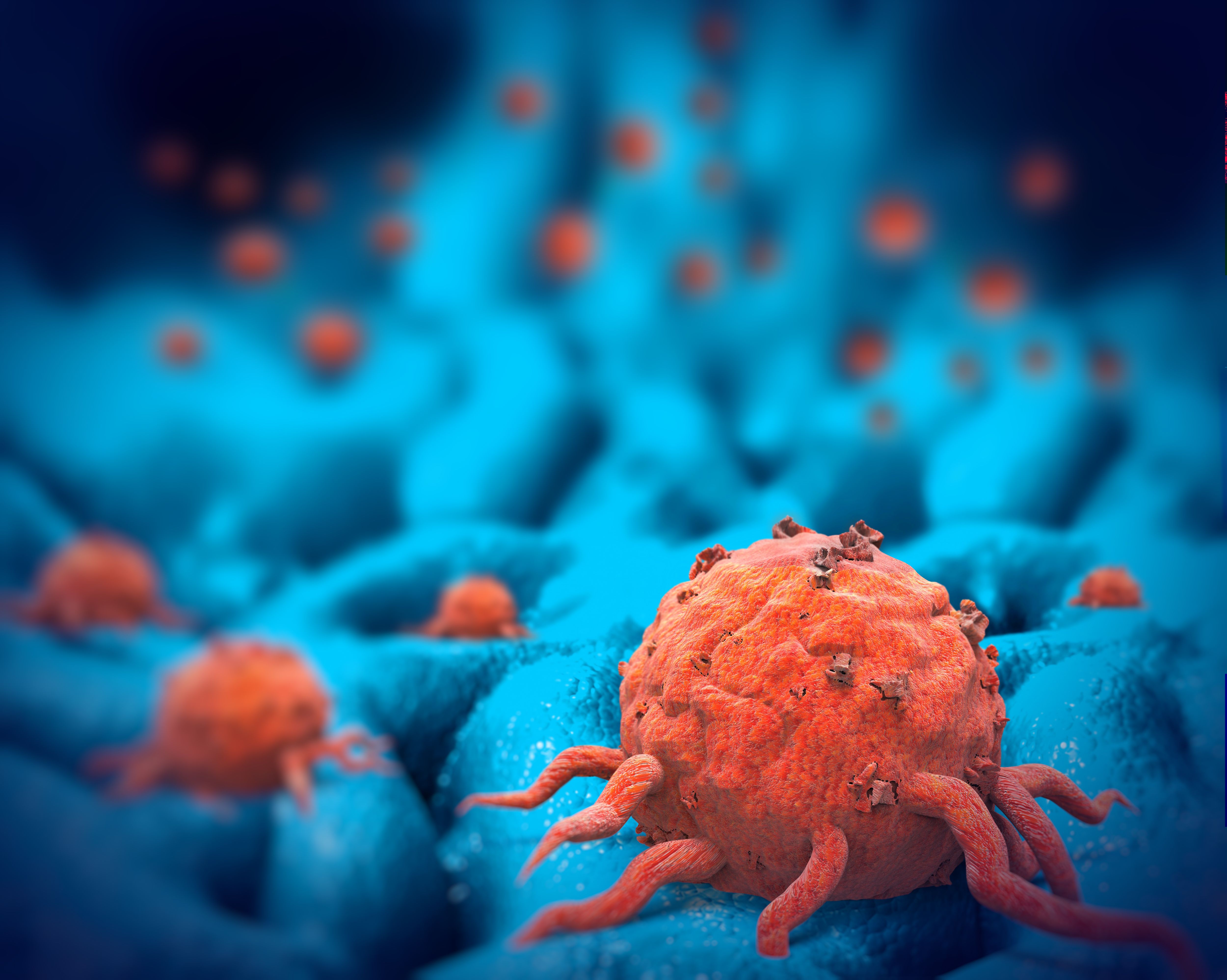Publication
Article
CURE
Caregiver Challenge: Sharing Their Pain
Author(s):
Caregivers may grapple with practical and emotional challenges as they help loved ones manage cancer-related pain.
Katie Piekut experienced severe pain even before her cancer diagnosis; in fact, investigating its cause led to the discovery of her cancer. Severe discomfort in her back and right leg, which her primary physician initially attributed to a sciatic nerve problem, led to an MRI that revealed a chondrosarcoma in her spine base.
In 2009, Katie underwent a 20-hour surgery to remove the large tumor and insert titanium rods and hardware to replace her tailbone. Two years ago, Katie had surgery again, this time to remove the cancer that had spread to her lungs.
“Pain has been a constant companion since my initial surgery. Although (my husband) Frank and I have both adjusted to it out of necessity, the pain I continue to suffer plays a major role in our daily lives,” says Katie.
To Frank, the pain signals a need to be vigilant.
“As Katie’s spouse and caregiver, my role is to be present for all appointments, absorb the information regarding her disease and aid her pain relief,” he says. “Often the best thing I do is prepare a cold pack or heating pad for her comfort.”
Not surprisingly, dealing with chronic pain has made life less satisfying for the Massachusetts couple.
“We both feel a loss of activities we used to enjoy,” Katie says. “I can no longer work or participate in life like I used to. I know that Frank feels a great deal of stress.”
There are three types of cancer pain that require important treatment decisions: acute, which is severe, but short in duration; chronic or persistent, which ranges from mild to severe; and breakthrough, a flare-up despite regular doses of pain medication.
Cancer pain can be caused by pressure from a tumor — for instance, one that has spread to, and compressed, the spine, nerves or organs, or has metastasized to the bones. Pain can result from surgery or from treatments such as chemotherapy, which can cause peripheral neuropathy, and radiation, which can cause skin burns, scarring and/ or injury to the throat, intestine or bladder; both chemotherapy and radiation can cause sores in the mouth and throat. Alternatively, pain can result from medical tests, such as biopsies of the prostate.
The good news: In most cases, cancer pain can be lessened or relieved. In fact, controlling cancer pain is considered by health care experts to be an important part of cancer treatment.
Frank and Katie Piekut

FRANK PIEKUT is dedicated to helping his wife, KATIE PIEKUT, ease the pain she has experienced since she underwent surgery for a chondrosarcoma.
PHOTO BY LISA CRANSHAW
New Responsibilities
Pain management can be challenging not only for the patient, but also for family members or friends who are serving as caregivers.
Depending on the patient’s situation and disease progression, a caregiver may assume responsibility for administering medications, tracking pain levels and side effects and communicating with health professionals, as well as handling household duties and finances.
In this role, caregivers may find themselves administering treatments orally or via skin patches, rectal suppositories, epidurals or shots under the skin (subcutaneous) or in the vein (intravenous). Caregivers can also assist patients in keeping a log of when they have pain, how severe it is and the timing and doses of pain medications, as well as side effects of those drugs. To express how severe pain is, patients can use a pain scale; a simple one rates pain on a level from zero to 10, but a caregiver can also ask the patient’s doctor which scale he or she prefers.
All of this can feel overwhelming.
“Before we assign pain management responsibility to a family member, we assess their willingness and readiness,” says Anita Mehta, a registered nurse who also holds a doctorate in nursing and is co-director of the Psychosocial Oncology Program at Montreal General Hospital. “If the family has the required information and support, they should be able to manage pain successfully regardless of the route of administration.”
Surviving a Loved One’s Chronic Pain
“Caregivers often feel like they’re getting a crash course in medicine or nursing,” comments Sarah Whitman, a board-certified psychiatrist specializing in chronic pain and a clinical assistant professor in the Department of Psychiatry at Drexel University College of Medicine. Whitman is co-author, along with psychologist David Kannerstein, of the short guide . “If there are health care tasks that you just don’t feel comfortable doing, ask if there are home nursing services, for example, that might help you directly,” she adds.
Working as a Team
Despite these myriad tasks, caregivers should remember that they are not working alone to ease a loved one’s pain. Instead, they are part of a medical team.
“Caregivers shouldn’t feel it’s their responsibility to manage pain. They can certainly assist, but that task is on the shoulders of the whole team,” Whitman says. “Caregivers can help patients take care of themselves, rather than taking over. Of course, there are situations when a caregiver really needs to administer medication and track pain levels, but don’t automatically assume as a caregiver that you need to do it all.”
So, who else should be on the team? First, caregivers and patients should identify the best medical professional to help with chronic pain relief and create a pain management plan.
Talking Points
→ HELPING A LOVED ONE to control chronic pain caused by cancer or its treatments can feel overwhelming to caregivers, who may be responsible for administering medications, tracking pain levels and side effects and communicating with health professionals, as well as handling household duties and finances.
→ THERE ARE STRATEGIES that can help caregivers cope, including working as part of a larger team, sticking to a doctor’s pain management plan, asking the right questions, and relaxing with techniques such as yoga or meditation.
Things I Wish I’d Known: Cancer Caregivers Speak Out.
“Caregivers shouldn’t assume that the primary oncologist will monitor and manage pain. They should raise the issue early and insist on the involvement of pain management specialists on the cross-disciplinary medical team,” says Deborah Cornwall, breast cancer survivor and author of “Palliative care physicians are trained in both the physical and psychological impacts of pain.”
Hospitals most likely have a pain management specialist; if not, caregivers can locate pain clinics in their areas by talking to their hospital’s social worker or calling the National Cancer Institute’s Cancer Information Service at 1-800-4-CANCER. The pain management team also could include a social worker, physical therapist and psychologist. Further, such teams may include an anesthesologist capable of administering specialized techniques for controlling severe pain, such as nerve blocks — specifically, peripheral blocks, epidural/intrathecal infusions of pain medication, or plexus (nerve bundle) blocks.
Once pain management teams are put together, caregivers may wonder what their roles are within the group, and how best to communicate with the professionals involved.
“These are questions to directly ask the team, because hospitals and doctors function differently,” advises Whitman. To be a helpful part of the team, a caregiver can provide health care experts with information about symptoms, medication side effects and how the patient is coping with the illness. When focusing on pain in particular, report not just pain levels, but also how pain is interfering with the patient’s life. For example, are they unable to sleep or work?
“Secondly, you can help the team care for your loved one by making sure you both understand the medical illness and the recommended treatments,” she adds. “Get your questions answered. Know who to reach 24/7 in case you have a question that can’t wait. Be sure the team is attending not just to the illness itself, but also to how your loved one is coping.”
Some questions caregivers can ask pain specialists before bringing their loved ones home are: How do the prescribed drugs interact? What are some likely side effects? How are the different drugs administered? What should be done if a dose is accidentally skipped? How do I know I’m not giving too much medication, or too little?
Caregivers should contact someone on the health care team if the pain medications aren’t working as quickly, or for as long, as predicted, or if pain isn’t going away or interferes with daily activities. A doctor can treat breakthrough pain by prescribing additional short-term relief medications.
If the patient isn’t doing well and seems to be in an unmanageable amount of pain, the caregiver should contact members of the team, who can decide if increased dosages or different medications are required, or if the patient needs to be admitted to the hospital.
“Stand up for the patient, but do so in a collaborative manner. Caregivers are experts in how the patient is doing, so you definitely want to communicate that knowledge to the team,” advises Whitman.
The Emotional Landscape
Since caring for a loved one who’s in pain can be both physically draining and emotionally wrenching, caregivers may find that it helps to make their care team even bigger.
“Create a ‘village’ of care, including the health care team and your friends, neighbors and family. You can’t do this alone,” Whitman suggests.
This may be one way of helping to banish feelings of helplessness, inadequacy and ill-preparedness, which are common among caregivers.
“Both the person diagnosed and the caregiver face loss of control and isolation. The presence of pain often exacerbates these two issues,” says oncology social worker Tim Cummings, program director at the Massachusetts South Shore affiliate of the patient advocacy group Cancer Support Community. Caregivers may feel less helpless and frustrated by seeing the bigger picture. Identify what you do have control over to improve the situation. In addition to being an advocate, this may be engaging your loved one in an enjoyable activity to provide distraction from pain, meditating together (good for both of you), or making sure they get to their support group or therapy session.”
Doug Reilly remembers facing these issues in caring for his mother after she developed breast cancer.
“As a caregiver, it was frightening to know I was essentially the ‘first responder’ for any medical issues,” says Reilly, who cared for his mother for three years. “My mother was the strongest person, physically and emotionally, and to see her beaten down by breast cancer was difficult. I very quickly learned to be an advocate for her, especially in the hospital.”
Reilly found that moving into his mother’s home helped make her final years more comfortable, and improved her quality of life dramatically.
“I wasn’t able to take her pain away. However, just spending time with her and taking care of daily responsibilities was great medicine for her,” he says.
Patients in pain might be angry or bad-tempered, and it can be hard for caregivers not to feel wounded if patients direct these emotions at them. Avoiding such hurtful exchanges can be a matter of trial and error. Frank Piekut found that “the key to responding to Katie’s infrequent anger bursts was to refrain from offering trite comforting sayings and actively listen.”
Another possibility may be that a patient needs psychological help to deal with constant pain.
"Katie had signs of depression when in a sub-acute facility,” Frank says. “I inquired about psychological services and she was aided with counseling and medication. Never be shy about requesting help.”
The Piekuts now regularly meet with a psychologist regarding family and home issues.
In fact, psychological symptoms may be an important clue that pain is flaring up when a patient refuses to discuss the problem directly. If a patient seems tired, depressed or stressed, he or she may be hiding pain. Other signs of untreated cancer pain are anger, worry and loneliness.
Some people with cancer simply have difficulty communicating that they are in pain; others may feel that they have to silently “tough it out.” Or they may fear addiction, even though it is rare with properly-managed cancer pain medications.
The Integrative Outlook
As part of an overall pain plan, it can be worthwhile to consider complementary means to control discomfort, including integrative techniques for easing pain, stress and anxiety. These include acupuncture, biofeedback, distraction, hot or cold applications, hypnosis, imagery, massage, meditation, Reiki, tai chi and relaxation techniques.
“I strongly feel that non-pharmacological strategies are successful, depending on the nature and pain location. Sometimes experimentation is necessary,” says Mehta.
There is scientific evidence that such techniques can help patients. Researchers at Memorial Sloan Kettering Cancer Center, in New York, have completed studies supporting the use of acupuncture and massage therapy to help relieve pain, and have also found that, in patients awaiting bone marrow transplant, music therapy alleviates stress and depression. Yoga is offered at the Abramson Cancer Center, in Pennsylvania, and at the Moffitt Cancer Center, in Florida, to help patients reduce stress — which can exacerbate pain — as well as to alleviate fatigue and anxiety.
Biofeedback, meanwhile, uses monitoring devices to teach patients to control bodily functions that otherwise are regulated automatically, such as heart rate and muscle tension. In a 2008 study, researchers found that biofeedback was “efficacious,” giving it a four on a scale of one through five for its ability to control chronic pain. A licensed biofeedback technician must administer this treatment.
Moreover, some of these methods can be used by patients and caregivers together, benefiting both by reducing stress and providing a new activity to do together when other hobbies may have been put on hold due to pain or cancer treatments. Meditation, yoga and progressive muscle relaxation are recommended by the American Cancer Society as ways for caregivers to help alleviate their own stress as they look after loved ones who are ill.
Helping a loved one manage chronic pain has many rewards: better sleep, improved appetite and increased energy and well-being — as the Piekuts can attest.
“Never once did I project that our 50s and 60s would require such severe adjustment,” says Frank Piekut. “In spite of the setbacks of the past six years, our love and care for each other grows, and is nourished by the support and love of family and friends.”
Care for the Caregiver
Caregivers need to take care of themselves in order to be able to help their loved ones,” says psychologist David Kannerstein, co-author of the short guide Surviving a Loved One’s Chronic Pain. Your own self-care plan could include:
Joining a caregiver support group (in person, by telephone or online): You can find these through hospitals, clinics, churches or community organizations. Or search the web using the words: “cancer support group caregivers.”
“Throughout the country there are over 47 Cancer Support Community affiliates, and eight international affiliates or partners, which also may be called Gilda’s Club or Wellness Community in your area, as well as local cancer conferences or workshops focusing on caregivers,” says Tim Cummings, a social worker who has facilitated caregiver support groups for eight years at a branch of the Cancer Support Community in Norwell, Mass.
That kind of help worked for Doug Reilly, of Massachusetts, who cared for his mother when she had breast cancer.
“The caregiver support group that I attended was a lifesaver because caregiving was a very isolating experience, and the support group showed me that I wasn’t alone,” Reilly says. “Take time for yourself. It’s very easy to lose oneself when caregiving.”
Patient advocacy group CancerCare has nine online caregiver support groups, as well as in-person caregiver groups in New York City. These can be found by visiting http://cancercare.org/support_groups. Another option: a 12-week telephone group. To register, call CancerCare at 800-813-HOPE (4673).
For more information, read CURE’s recent article “Lining Up for Online Support."
> Seeking individualized emotional support: You can speak one-on-one with professional oncology social workers at CancerCare to help develop strategies for resolving your emotional or practical challenges.
Call: 800-813-HOPE (4673) or e-mail info@cancercare.org.
> Taking care of yourself: Don’t neglect your own health, including checkups, screenings or medications. Try your best to get enough exercise, healthy meals and sleep. Get regular stress relief through relaxation techniques, breathing exercises and gentle stretching.
A checklist of strategies that can help caregivers thrive can be found on the American Cancer Society’s website at http://tinyurl.com/mowcy5w.
Or, determine whether you need assistance with the distress you’re experiencing as a caregiver by reviewing another ACS checklist: http://tinyurl.com/aehmgaq.
>Seeking a daily dose of fun: “Every caregiver actually needs to take a few minutes every day for self-care,” says Deborah Cornwall, who interviewed 95 caregivers for her book, Things I Wish I’d Known: Cancer Caregivers Speak Out. “That could mean engaging in your favorite hobby, going to yoga class or just reading a book. With several caregivers, even short periods of respite recharged their batteries.”
Frank and Katie Piekut







